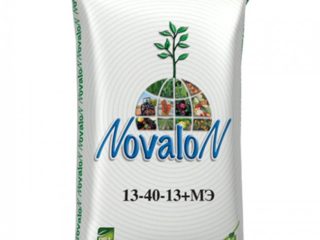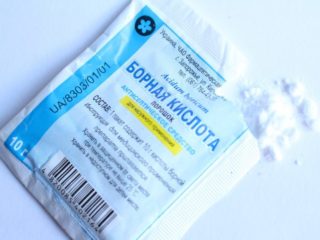Content
- 1 Composition and release form
- 2 Active ingredient of herbicide Hacker
- 3 Advantages and disadvantages
- 4 Speed and duration of action
- 5 Preparation of working solution
- 6 Instructions for use of the drug Hacker VRG for weeds
- 7 Compatibility with other tools
- 8 Security measures
- 9 Analogues
- 10 Conclusion
- 11 Reviews of the drug Hacker VRG for weeds on the lawn
Weeds, “choking” cultivated plants, are one of the main problems for a gardener. Regular weeding of beds takes a lot of time and effort, but there is an alternative way to combat them - special selective preparations. These include the herbicide Hacker, which is used mainly in the cultivation of grains and agricultural crops on an industrial scale.
Composition and release form
Hacker is a systemic post-emergence herbicide with selective action, from the well-known company “August” in Russia. It is used against annual and perennial weeds, including “hard-to-kill” ones. Often the herbicide Hacker is positioned as a remedy for dandelions.
Herbicide Hacker is available in the form of water-soluble granules. This is indicated by the abbreviation “VRG” in the name.The drug is packaged in plastic bottles weighing 1 kg. The composition contains the only active ingredient – clopyralid.
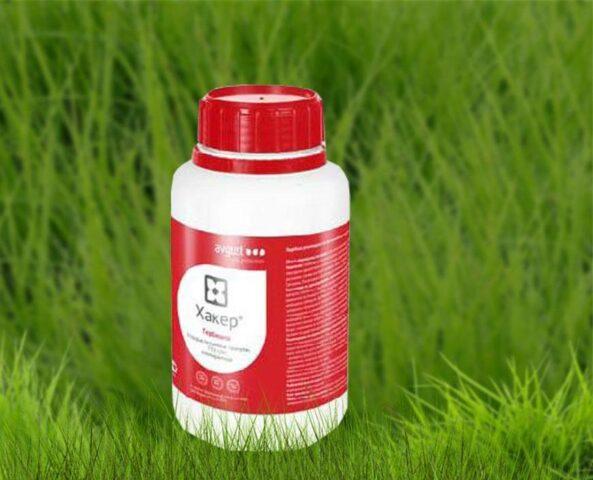
The drug is used mainly by professional farmers on large areas, so there is no need to release “small portions”
Active ingredient of herbicide Hacker
The effectiveness of the herbicide Hacker against weeds on the lawn and crop areas is ensured by clopyralid in high concentration (750 g/kg). This substance is from the class of chlorinated derivatives of pyridines, which is a synthetic analogue of phytohormones of growth. It has been widely used in herbicide production for almost 50 years.
Once on the surface of the weed, the active ingredient is “absorbed” inside and, through a system of “vessels” for sap flow, spreads throughout the above-ground part and root system. The effect of the herbicide Hacker on dandelions and any other weeds is the same: as a result of receiving an “overdose” of hormones, the cell division mechanism at the point of growth of the weed is “knocked down”, then completely “paralyzed”. Affected specimens become deformed, twisted, practically stop developing and die quite quickly.

In fact, the herbicide Hacker is an analogue of the biostimulants-auxins widely used in the garden.
Advantages and disadvantages
Among the obvious advantages of the Hacker pesticide:
- effectiveness against a large number of annual and perennial weeds common in central Russia;
- destruction of both the aboveground part and the root system of “undesirable” plants;
- high selectivity for crops;
- quick effect, noticeable less than a day after treatment;
- duration of action;
- safety for humans, warm-blooded animals and pollinating insects;
- lack of phytotoxicity;
- possibility of using in tank mixtures simultaneously with other herbicides;
- ease of preparation of the working solution and processing of plantings.

The advantages of the herbicide Hacker appear only if the instructions are followed exactly
Disadvantages can be noted:
- High cost. It is due to the large volume of bottles with the drug, intended mainly for use by professional farmers.
- "Non-universality." The drug cannot be used to treat any plantings in the beds; in some cases, after spraying, the crop becomes unsuitable for food.

Herbicide Hacker can only be stored and transported in its original packaging
Speed and duration of action
Approximately 4-6 hours after spraying with Hacker herbicide, the weeds lose their tone and noticeably droop. The above-ground part of the plants lies on the ground after 12-24 hours. Chlorosis begins to develop, the leaves curl, the stem becomes deformed, becomes covered with cracks, as if “woody.” The weed dies completely in 7-20 days.

How long it takes to kill a weed depends on the age of the plant and its type
According to the manufacturer, the protective effect after a single treatment with the herbicide Hacker lasts until the end of the active growing season. In most cases this is true, but some crops sometimes require repeat spraying. In addition to the type of weed, this is influenced by the climatic conditions of the area, the frequency and intensity of precipitation during the season.
Preparation of working solution
Herbicide Hacker is diluted directly into the container from which the plantings will be sprayed. Approximately half the specified volume of water is poured into it and granules are added in the required quantity. Next, you need to wait until the drug is completely dissolved, vigorously stirring the liquid, and pour in the remaining water. The prepared solution is stirred well again.

Only water that is purified from mechanical impurities, heated to approximately room temperature and not hard is suitable for this.
Instructions for use of the drug Hacker VRG for weeds
The area is treated with Hacker herbicide when the weeds enter the active growth phase. They are most “susceptible” to the chemical at the 2-3 stage of the true leaf. The “older” the weeds and the more advanced the problem, the greater the consumption of the drug.
The best time to spray plantings with Hacker herbicide is the morning or evening of a cool, cloudy day. To avoid the chemical getting on nearby plants, there should be no strong wind.
Rape
Herbicide Hacker is used to treat both spring and winter rapeseed. The concentration of the working solution is 0.12 (120 g of granules per 10 l of water). The approximate consumption rate is 200-300 l/ha. Repeated treatments during the season are prohibited. Harvesting is permitted no earlier than 60 days after spraying.

Spraying of rapeseed plantings is carried out in the spring, in the interval between the phase of the 3-4th true leaf and budding
Sugar beet
Treatment with the herbicide Hacker protects fodder and sugar beet plantings from weeds. Plants are sprayed when their rosette consists of 3-5 true leaves. The concentration of the working solution varies between 0.12-0.2 depending on the type of weed and the degree of neglect of the site. When processing, 125-165 l/ha are consumed.
Beets can be sprayed with Hacker herbicide repeatedly to avoid being “smothered” by a new “wave” of weeds in mid-summer. At least 60 days must pass before harvest.

To re-process beets, use a solution of the minimum permissible concentration
Linen
Fiber flax plantings are sprayed with the herbicide Hacker when perennial dicotyledonous weeds in the beds begin to form a rosette. The agricultural crop at this time is in the “herringbone” stage.

For flax, use a solution in a concentration of 0.08-0.12, spending 200-300 l/ha
Cabbage
Weeds in beds with white cabbage are sprayed with the herbicide Hacker shortly after planting the seedlings in the ground. At this time they are just forming rosettes of leaves.The concentration of the working solution in this case is 0.12, the approximate consumption rate is 200-300 l/ha.
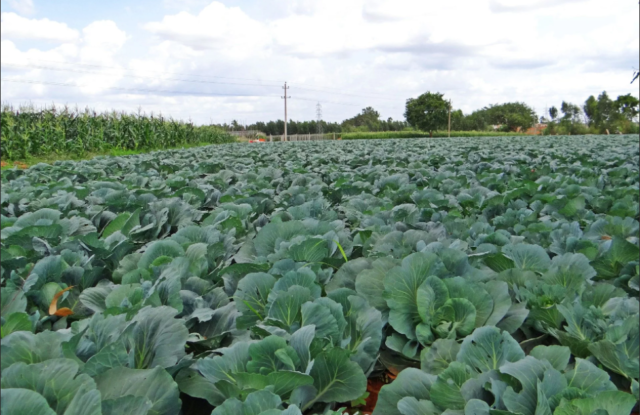
The waiting period before harvesting cabbage is the same as for other crops - 60 days
Hacker is an effective herbicide for lawn grass that destroys dandelions, plantain, buttercups, and sorrel. For 10 liters of water take 5 g of granules, the approximate consumption of the solution is 5 liters per hundred square meters. Instructions for use of the herbicide Hacker for lawns provide for a three-day ban on going onto the grass after treatment.
Compatibility with other tools
Hacker is compatible with other popular herbicides with a different active ingredient - Miura, Biceps, Pilot, Magnum, Quickstep. Tank mixtures are prepared directly in the sprayer container. A “test” is first carried out, combining liquids in small volumes to ensure the “stability” of the finished solution, the absence of sediment and other chemical reactions.
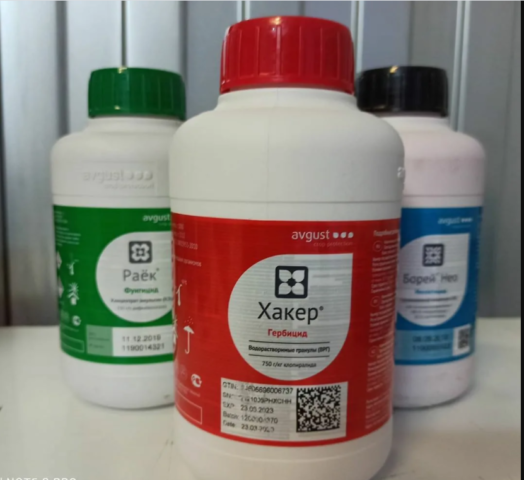
Herbicide Hacker can also be mixed with insecticides and fungicides
Security measures
In terms of toxicity, the herbicide Hacker belongs to hazard class III and is considered moderately dangerous for humans and warm-blooded animals. However, all work with the chemical is carried out only with a “basic” set of personal protective equipment - goggles, respirator, rubber gloves. You also need to protect your skin as much as possible by wearing thick clothing with long sleeves and trousers, and closed, waterproof shoes. Hair is tucked under a cap, scarf or hood.
Other basic precautions are also observed, excluding:
- eating, drinking, smoking while working with the herbicide Hacker;
- the presence of children, pets, and livestock in the sprayed area;
- preparing a working solution in containers used for storing food and drinking water;
- draining remaining liquid into sewers or any bodies of water;
- storing the drug with food, feed, medicines, within the reach of children or pets.

If it is not possible to process the plantings by mechanization, all precautions must be taken
A solution of Hacker herbicide that accidentally gets on the skin is washed off with water and soap. The mucous membranes of the eyes, mouth, and nose are rinsed with a large volume of cool running water. If the liquid is swallowed, drink several glasses of a bright pink solution of potassium permanganate, inducing vomiting and clearing the stomach.
If symptoms indicate an allergy or serious poisoning, you should consult a doctor as soon as possible. In the first case, it is recommended to take any antihistamine; in the second, “self-medication” is strictly prohibited. There is no special antidote for the herbicide Hacker; therapy is aimed at eliminating the symptoms of poisoning.
Analogues
There are quite a lot of analogues of the herbicide Hacker. Preparations based on clopyralid are produced by both Russian and foreign companies. Popular among gardeners are:
- Lontrel-300;
- Gazontrel;
- Premier-300;
- Clorite;
- Bis-300.
They differ in the form and volume of release, the concentration of the active ingredient, and the presence of additional anti-weed components.There are also drugs for “targeted” use. For example, Gazontrel is used exclusively for treating lawn grass.

In the herbicide Lontrel-300, the concentration of clopyralid is lower than in the drug Hacker - 500 g/l
Conclusion
Herbicide Hacker is a systemic drug that “selectively” destroys annual and perennial weeds in beds with agricultural crops. In most cases, one treatment is enough to solve the problem for the entire season. The chemical belongs to the category of moderately hazardous; however, when working with it, one must not forget about safety measures and personal protective equipment; one must strictly follow the instructions.
Reviews of the drug Hacker VRG for weeds on the lawn
